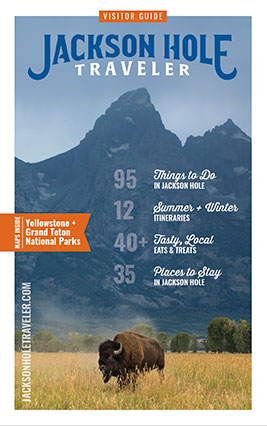Award-winning wildlife photographer Ashleigh Scully may only be 14 years old, but she has learned more about photography over the past six years than most people thrice her age. The Wildlife Photographer of the Year finalist is a full-time resident of New Jersey, but her family also has a house in Wilson, making Jackson Hole her “home away from home.”
Starting Young, Mentored by Legends
Mentored by legendary Jackson Hole-based wildlife photographers Tom Mangelsen and Henry Holdsworth, as well as world-renowned wildlife photographer Melissa Groo, Ashleigh’s photos have been used by the Teton Raptor Center, The Murie Center and Wyoming Untrapped. She recently won first place in the Yellowstone Forever Photo Competition/Youth Landscapes, received honorable mention in the Wyoming Wildlife Magazine Photo Competition for two years straight and been in the top 100 of the Audubon Photography Competition, among other honors.
Ashleigh met Tom Mangelsen while she was photographing some Great Gray Owls in October of 2013. She says Mangelsen was “so kind to me and offered me some great advice.” They met again in the field a year later while they were both photographing Grizzly 760 near Oxbow Bend.
She first met Henry Holdsworth at his gallery, Wild By Nature, when she was 11 years old, and he has taken her out in the field many times. She has taken two of his workshops: one in Grand Teton National Park and one in Lake Clark National Park, Alaska.
Acclaimed Jackson Hole photographer Henry Holdsworth calls Ashleigh his "owl whisperer."
“Henry and I have had so many fun adventures together and we’ve seen so many amazing things,” she says. “We’ve photographed river otter families in the snow, pouncing foxes in Yellowstone, Great Gray Owls and grizzlies in the Tetons, and so much more. Henry keeps pushing me to try new things and he is such a great friend now to my family and me. He calls me his “owl whisperer.”
Ashleigh's Tips For Photographing Wildlife
Here are Ashleigh’s tips for “capturing” wildlife:
- The best time of day to photograph is definitely at dawn or dusk when the light is low and it looks the best. I also like photographing during the middle of the day when it’s overcast out and the sunlight isn’t so strong. I have learned some good lessons about keeping my distance from wildlife when photographing. I love getting intimate portrait shots when I can, but I have to stay at the minimum distance based on the park rules, so I use a telephoto and extender to get closer shots if I want them. I am starting to appreciate how important it is to give wildlife more space and to show more of their environment in the photo.
"I have learned some good lessons about keeping my distance from wildlife when photographing." - Ashleigh Scully
- Some of my favorite places to photograph in Grand Teton National Park are the Oxbow Bend area and Moose-Wilson Road. Oxbow Bend can be great for otters and bald eagles in the winter and grizzlies and moose in the spring. Moose-Wilson Road can be very busy sometimes, but if you go early enough you can find lots of different subjects including owls, moose, beavers and black bears.
In Yellowstone National Park, I love driving through Little America and Lamar and Hayden valleys. I am always looking for red foxes and coyotes and have been lucky to see wolves sometimes. I also enjoy getting off of the roads and exploring (with my parents and bear spray of course!). Spring Gulch Road in Jackson Hole can have lots of different raptors like red-tailed hawks (different morphs, too), golden and bald eagles and sometimes owls. It can also be a great place to see mule deer.
- My favorite birds to photograph are easily owls. I have photographed five different owl species so far, but my favorite two are the ones that I know I can find in the Tetons: the Great Gray and the Great Horned Owl. Some people think owls only come out at night but they are really crepuscular, which means they are out at dawn and dusk. Great Grays can be out in the middle of the day, too, more than any other owl that I know of. They seem to be very relaxed around people, but you still have to give them space. My favorite memories of photographing in the Tetons are always of this species. It’s an adventure finding them and they are so exciting to watch hunt for prey. The Great Horned Owl may be more common, but I think they can be tougher to photograph because they tend to be spookier and are out mostly when the light is poor for photography. I have had some great experiences with these owls out here and am always looking and listening for them in the mornings and early evenings. You have to be very patient when looking for owls because it requires good listening skills and you have to have good eyesight too. Once you find them, it takes a lot of patience to find the right angle and light, and set up without disturbing them.
- My favorite animal to photograph has to be the red fox, but the coyote is a close second. Red foxes in the wintertime against the snow are really pretty to see and they are a challenge to photograph pouncing. Coyotes don’t get much respect with photographers I think. They can be very fun to watch though, like red foxes are, and are really beautiful to see when healthy.
To view Ashleigh's amazing photos of furry and feathered Jackson Hole area wildlife, visit ashleighscullyphotography.com.


